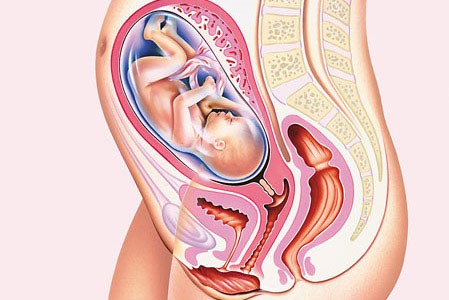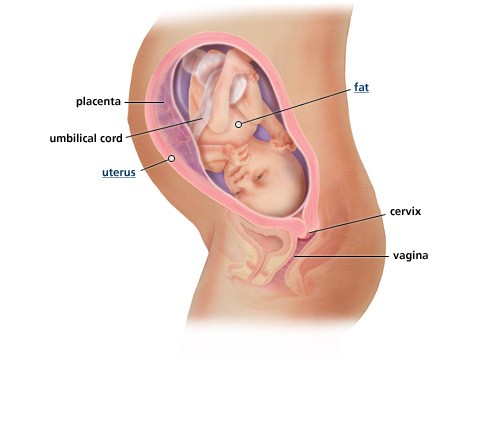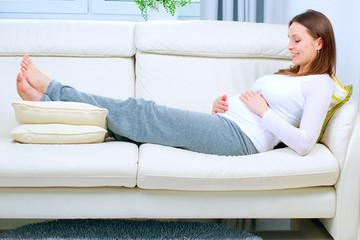- NAPPIES
- BABY FOOD & FEEDING
- BABY CLOTHING
- BABY EQUIPMENT
- FAMILY ESSENTIALS
- THE PET SHOP
- BROWSE SPECIALS
|
3rd Trimester (weeks 27-40)
Week 31
About You 
Week 31 is the fifth week of the 3rd trimester. As mentioned in week 30, you may feel a little breathless during these last few weeks before your baby's birth. This happens because your uterus has grown so large it presses up against your diaphragm, the large flat muscle across your middle that helps you to breathe. This breathlessness will continue until your baby drops down into your pelvis . This happens at about 36 weeks for first pregnancies and perhaps not until birth if you're already a mum. If you've been exercising throughout your pregnancy , gentle exercise may help your breathlessness now. Also, now is a good time to listen to your body, and take things easy if need be. For example, don’t lift anything heavy, as it will put a strain on your softened ligaments, although this can prove difficult if you already have a toddler to run after! Maternity belts offer great support for a lower back. This is also a good time to revise things learnt in your antenatal classes (like breathing) and to go over your birth plan with your partner. Also think about pain relief during childbirth (none, gas, pethidine, epidural), and remember that an epidural usually requires pre-signed consent forms .
Make the
most of your baby's movements this week – even if it is keeping you
awake at night!
Soon your baby won't be able to
move around as much as it runs out of room in your
uterus (womb).
As you and baby continue to grow, you will experience more discomfort associated with pregnancy, such as hip pain. In your pelvis, the ligaments may loosen so much that it affects the joint where your pelvic bones hold together. This loosening may result in symphysis pubis dysfunction (SPD), which is very painful. If you have SPD, rest regularly by sitting on a birth ball or by getting down on your hands and knees. This takes the weight of your baby off your pelvis and holds it in a stable position. Keep up with your pelvic floor exercises , too. Rest assured that having SPD shouldn't cause you problems when you come to give birth. And the best bit is that it usually disappears as soon as your baby arrives. Also many women experience varicose/spider veins or swollen feet due to restricted blood flow. If this is the case, try wearing support hose to improve circulation and don’t stay on your feet for long periods. If possible, elevate your feet during rest periods through the day and prop your legs and feet on a pillow at night. After baby is born, you won’t have to put up with swollen feet anymore and your veins will be less noticeable.
About Baby 
This
week your baby continues to put on weight, weighs around 1.5 kilograms and
measures about 41.1cm from head to heel. Your baby can now move his head from
side to side, organs are continuing to mature and a layer of fat is being laid
down beneath skin – so the legs and arms now start to look in proportion to the
head, making baby look more like a newborn. You may notice your baby isn't
moving around as much because it is running out of space in your uterus. As
long as you can feel baby squirming, you'll know that everything is OK. Believe
it or not, there is still plenty of growing to do, with a further baby weight
gain of around 900 grams or more before delivery.
Your baby's organs are continuing to mature
and water is passing from the bladder, which is good practice for urinating after
birth.

Note that this article contains general information only and is not intended to replace advice from a qualified health professional. |